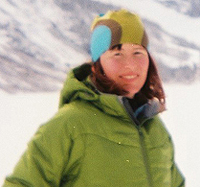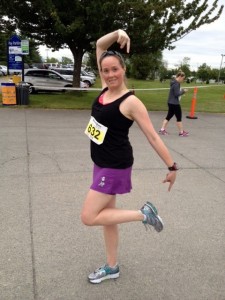By Ed McNeely – Peak Centre for Human Performance
Training without monitoring your progress is like driving with your eyes closed, you will get somewhere but you can’t be sure where or what shape you’ll be in when you arrive. Through daily monitoring you will be able to make the fine adjustments to your program that allow you to continue to progress and recover at the fastest rate possible.
Although many people dislike math or the thought of math, numbers are your friends when it comes to developing rowing fitness. Recording time, rate, speed, bodyweight, and heart rate provides a basis for measuring and monitoring training sessions and the program as a whole. The numbers are not the whole story, they will tell you what is happening in a training session but don’t help explain why, you need to combine training data with recovery data that measures sleep, soreness and other physiological parameters that will show whether you are heading towards an overtraining state or not.
Over the years many physiological tests have been developed to try and measure recovery and guide training programs. Blood urea, creatine kinase, hormone levels and ratios, and blood amino acid profiles are just some of the tests that have been used. If you are an elite professional making millions of dollars per year and have access to top medical and physiology labs and consultants these tests are probably worth using. For everyone else there is a much simpler way that has been shown to be as effective as all the expensive blood work; the recovery questionnaire.
The Recovery Questionnaire
The recovery questionnaire is filled out every day of the week whether there is a workout scheduled or not, you want to be able to measure the effect of a day off as well as a training day. A 2-3 week baseline should be established in the off-season when you are doing little or no training. The baseline is used to measure how far from a fully recovered state you are moving as a result of training and will be referred back to every week so keep the baseline numbers handy.
Each of the items in table 1 are rated on a scale of 1-10, using half points as well as whole numbers. Low numbers are better ratings for example a rating of 1 on quality of sleep means you had a great nights sleep, a 10 might mean you were up most of the night. The ratings are based on how you fell when you first wake up and get out of bed in the morning. Be honest with yourself, as you will use this information to adjust your program. Body weight should be measured after voiding and before breakfast so that conditions for the weigh in are standardized. Morning heart rate is measured as soon as you wake up. Keep a watch by your bedside and take a 30 second heart rate count and multiply it by two to get the number of beats per minute.
Table 1. Recovery Questionnaire
| Item |
Mon |
Tues |
Wed |
Thurs |
Fri |
Sat |
Sun |
Average |
Baseline |
| Hours of Sleep |
|
|
|
|
|
|
|
|
|
| Sleep Quality |
|
|
|
|
|
|
|
|
|
| Muscle Soreness |
|
|
|
|
|
|
|
|
|
| Joint Soreness |
|
|
|
|
|
|
|
|
|
| General Fatigue |
|
|
|
|
|
|
|
|
|
| Desire to Train |
|
|
|
|
|
|
|
|
|
| Motivation |
|
|
|
|
|
|
|
|
|
| Morning HR |
|
|
|
|
|
|
|
|
|
| Bodyweight |
|
|
|
|
|
|
|
|
|
Using the Data to Adjust The Program
All data is compared back to the baseline established in the off-season. No single variable can assess recovery; the power of the questionnaire comes from the use of multiple variables simultaneously. If you see an increase of two points on the unshaded variables, compared to the baseline, on three or more variables two days in a row you need to take a day off or cut both the volume and intensity of the day’s training in half. If the week average of three of the unshaded items increases by three or more points you need to schedule a recovery week, even if one is not planned in the program.
Morning heart rate and body weight are not included in the daily and weekly analysis because changes in these items are much more gradual than the other factors that are being monitored. Increases in morning heart rate of more than 10 beats per minute for a week or more should be looked at closely, if it is occurring without changes in any of the other variables it may signal a loss of aerobic fitness which may or may not affect your performance depending on the endurance demands of your sport. If the weekly average is increasing and morning heart rate is high you need to consider planning a recovery week.
Unintentional decreases in bodyweight are one of the early signs of overtraining. Body weight can fluctuate daily because of hydration levels and what you ate and drank the previous day. Very large athletes can see their weight change by several pounds from day to day; because of this it is better to use weekly percent changes in body weight to assess your long-term weight profile. If you see a weekly-unintended weight loss of more than two percent something needs to be adjusted in training or diet. First increase fluid intake to see if you are dehydrated because of the week’s training schedule and insufficient fluid intake. If the weekly average of other variables is increasing and bodyweight is decreasing there is a good chance that you are beginning to overtrain and need to schedule a recovery week.
Regular monitoring of recovery will help you adjust your training program and give you an idea of the effect that various workouts have on your body. Combining recovery measures with the information on boat speed, perceived intensity of a workout and work time will allow you to dial in your training program and ensure the fastest rate of progress.
___________________________________________________________
PEAK Centre staff have the highest certifications available in Canada for Sport Science. With their combined experience and education, PEAK Centre is at the forefront of practical Sport Science application.
 Born in Nova Scotia and emigrating to British Columbia via Ontario and Alberta, Magi has been running the entire way. Primarily defined as a cross country ski racer, Magi has competed nationally and internationally in that sport. The highlight of her career was competing in the World University Games and the World Cup races in Canada in 2007. Cross country skiers rely heavily on running for cross training and Magi has become an accomplished trail and mountain runner, representing Canada at the World Mountain Running Championships in 2005 and the winning numerous national championships medals.
Born in Nova Scotia and emigrating to British Columbia via Ontario and Alberta, Magi has been running the entire way. Primarily defined as a cross country ski racer, Magi has competed nationally and internationally in that sport. The highlight of her career was competing in the World University Games and the World Cup races in Canada in 2007. Cross country skiers rely heavily on running for cross training and Magi has become an accomplished trail and mountain runner, representing Canada at the World Mountain Running Championships in 2005 and the winning numerous national championships medals. 

 has, they still feel like a new shoe. And the silver gray mesh means the shoes hide dirt well and still look pretty new as well.
has, they still feel like a new shoe. And the silver gray mesh means the shoes hide dirt well and still look pretty new as well. 
 Our Magazine
Our Magazine
